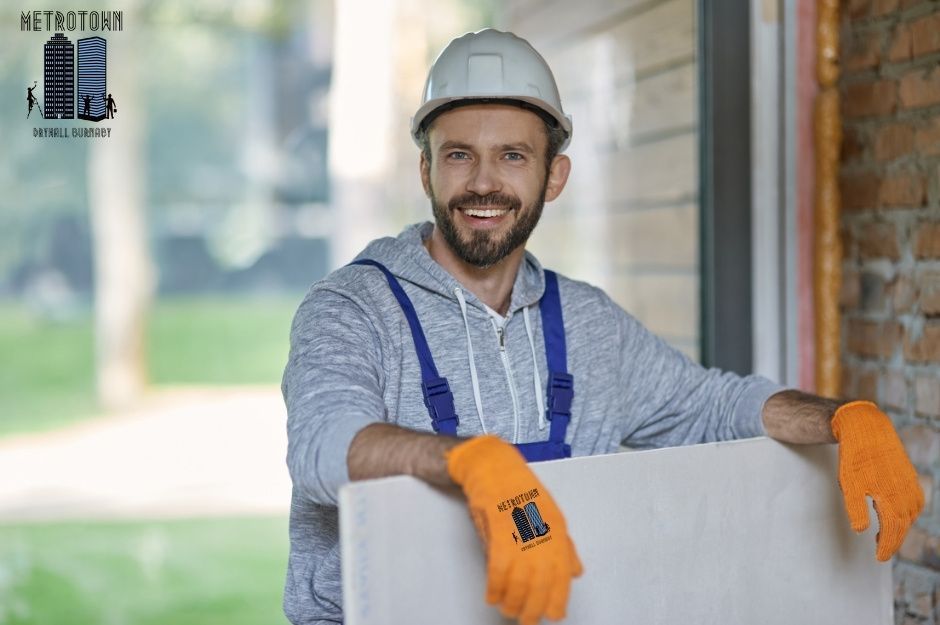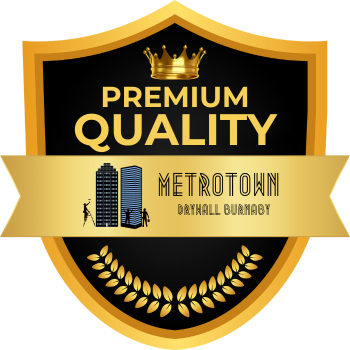Maple Ridge Drywall Repair
Drywall Repair Company in Maple Ridge, British Columbia

Maple Ridge homeowners can rely on several experienced drywall contractors who offer comprehensive repair and installation services. Located in the northeastern section of Greater Vancouver with a growing population of 90,990 residents as of 2021, Maple Ridge's housing market has seen a 10.6% population increase since 2016, creating strong demand for renovation and repair services. From minor patches to complete installations, these skilled professionals handle everything from water damage restoration to popcorn ceiling removal. Metrotown Drywall Burnaby has drywall contractors that provide expert solutions for holes, cracks, water damage, ceiling repairs, and professional finishing services at competitive rates.


Many established companies like Ironwood Drywall Richmond, Coquitlam Drywall Squad, and Deas Drywall Delta serve both residential and commercial properties throughout the Lower Mainland. These contractors are familiar with the unique challenges of Maple Ridge's oceanic climate (Köppen Cfb), including the city's high annual precipitation of 1,901.9mm, which can contribute to moisture-related drywall issues in homes throughout communities like Haney, Albion, Port Hammond, and Whonnock. These contractors bring decades of experience in drywall installation, repair, and finishing, ensuring high-quality craftsmanship for every project.
You'll find these contractors equipped to handle projects of any size, from small repairs to full renovations. Serving Maple Ridge's 33,103 private dwellings across the city's 267.82 km² area, contractors understand the diverse housing styles from heritage Port Haney buildings to modern developments in Silver Valley and Thornhill. Their services include professional consultations, detailed quotes, and comprehensive solutions tailored to your specific drywall needs, whether it's patching a hole or installing new walls throughout your home.
Drywall Repair Services in Maple Ridge
Professional drywall repair services in Maple Ridge address a wide range of wall and ceiling damage issues. Given the city's location between the Fraser River and the Golden Ears mountains, homes often experience settling-related cracks due to the area's varied topography and seasonal temperature fluctuations ranging from winter lows of -17.5°C to summer highs of 36.5°C. Local contractors utilize specialized tools and proven techniques to restore damaged surfaces to their original condition.
Comprehensive Patching Solutions
Skilled drywall contractors repair holes of all sizes using precise matching techniques. Small nail holes require simple spackling compound and sanding, while larger holes need proper support backing and tape reinforcement.
You can expect contractors to use mesh tape for added strength on medium-sized repairs. For extensive damage, they'll cut back the damaged section to the nearest studs and install new drywall panels.
Professional patching includes texture matching to blend repairs seamlessly with surrounding walls. The process typically involves multiple coats of joint compound and expert sanding between layers.
Addressing Cracks and Surface Imperfections
Surface cracks often develop along joints or around windows and doors. In Maple Ridge's diverse neighborhoods, from the Finnish-settled areas of Albion and Webster's Corners to the heritage mill houses of Port Hammond, contractors encounter various building ages and construction methods that influence crack patterns and repair approaches. Contractors first determine if cracks are due to settling or structural issues before beginning repairs.
Hairline cracks require flexible compounds that prevent future cracking. Deeper cracks need V-shaped grooves cut along their length before filling.
Proper repair includes reinforcement with paper or mesh tape to prevent crack reappearance. Multiple thin coats of compound ensure smooth transitions between repaired and existing surfaces.
Popcorn Ceiling Removal Techniques
Professional popcorn ceiling removal starts with testing for asbestos in older homes. This is particularly important in Maple Ridge, as British Columbia's fifth-oldest municipality incorporated in 1874, where many homes in established areas like Haney's downtown core and Ruskin may contain vintage building materials requiring special handling. Contractors protect your floors and walls with plastic sheeting before beginning the process.
The removal technique involves carefully spraying water to soften the texture, then scraping it away with specialized tools. After removal, contractors smooth the ceiling surface with joint compound.
Your ceiling may need repairs or patching before the final smooth finish can be applied. The process concludes with sanding and primer application for a modern, clean appearance.
Effective Ceiling and Water Damage Restoration
Water-damaged drywall requires immediate attention to prevent mold growth. Maple Ridge's substantial annual rainfall of 275.8mm in January alone and average of 21 precipitation days per month during winter makes water damage a common concern for homeowners, especially in areas near the Fraser River and Kanaka Creek. Contractors first identify and fix the water source before beginning repairs.
Affected areas are cut out beyond the visible damage to ensure all compromised material is removed. Professionals use moisture meters to verify surrounding drywall is completely dry.
New moisture-resistant drywall installation includes proper taping and mudding techniques. The restoration process incorporates anti-mold treatments when necessary to prevent future issues.
Ceiling repairs often require additional support structures to prevent sagging. Special attention is paid to insulation replacement and proper ventilation in affected areas.
Professional Drywall Installation Methods
Professional drywall installation requires precise measurements, proper material selection, and expert techniques to create smooth, durable walls and ceilings. Working within Metro Vancouver's building codes since Maple Ridge joined the regional district in 1995, skilled contractors ensure all installations meet current standards for the city's mix of residential and commercial properties. Skilled contractors use specialized tools and proven methods to ensure flawless results.
Residential and Commercial Installations
Your residential drywall installation typically involves standard 1/2-inch panels for walls and 5/8-inch fire-resistant panels for ceilings and garages.
Commercial installations require fire-rated Type X drywall and specific mounting techniques to meet building codes and safety regulations. This is especially relevant for Maple Ridge's growing commercial sector serving the city's population density of 339.7 people per km², with contractors working on everything from downtown Haney businesses to industrial projects in the Iron Mountain area.
The installation process starts with proper wall framing inspection to ensure studs are level and correctly spaced at 16 or 24 inches on center.
Professionals use lift systems for ceiling installations, reducing the risk of panel damage and ensuring proper alignment.
Material Selection and Preparation
Select moisture-resistant drywall for bathrooms and basements to prevent mold growth and water damage. Given Maple Ridge's oceanic climate with high humidity levels, especially during the 184 average rainy days per year, moisture-resistant materials are essential for long-lasting installations.
Common Panel Types:
- Standard drywall (1/2" and 5/8")
- Moisture-resistant (green board)
- Fire-resistant (Type X)
- Soundproof panels
Proper panel acclimation requires storing materials in the installation space for 24-48 hours before work begins. This is particularly important during Maple Ridge's winter months when temperature differences between outdoor storage and indoor installation can be significant, with daily mean temperatures ranging from 2.4°C in December to 17.8°C in August.
Measure twice and mark all electrical outlets, windows, and doors before cutting to minimize waste and ensure accurate fits.
Precision Cutting and Fitting
Use a T-square and utility knife to score and snap panels for clean, straight cuts. Electric drywall saws work best for outlet boxes and irregular shapes.
Apply panels horizontally on walls to minimize seams and create stronger installations. Stagger joints between rows to prevent straight vertical lines.
Maintain 1/4-inch gaps at floor level and 1/8-inch spacing between panels to allow for natural building movement and proper joint compound application.
Secure panels with appropriate-length drywall screws every 12 inches along studs, dimpling the paper without breaking it.
Expert Drywall Finishing for Seamless Results
Professional drywall finishing transforms raw drywall installations into smooth, flawless surfaces ready for paint or other decorative treatments. Whether restoring heritage buildings in the Port Haney heritage district or finishing new constructions in developing areas like Yennadon, contractors adapt their techniques to match the architectural character of Maple Ridge's diverse communities. The right techniques and proper attention to detail create walls and ceilings that stand the test of time.
Taping and Mudding Processes
The foundation of quality drywall finishing starts with precise taping and mudding. Your contractor will apply paper or mesh tape to all seams and corners, ensuring proper adhesion to prevent future cracking.
Three coats of joint compound create the seamless finish. The first coat embeds the tape and fills major gaps. The second coat, applied slightly wider than the first, builds up the surface level.
The final coat extends even further out, feathering the edges to blend perfectly with the surrounding drywall. During Maple Ridge's wet season from October through March, when monthly precipitation averages between 189-308mm, contractors may need to extend drying times between coats to ensure proper curing in high-humidity conditions. Each layer must dry completely before the next application, typically taking 24 hours between coats.
Sanding and Surface Smoothing
Professional sanders use specialized tools and techniques to achieve a glass-smooth surface. Starting with medium-grit sandpaper, they remove any ridges or high spots in the dried compound.
A second pass with fine-grit sandpaper eliminates minor imperfections. Special attention goes to the transitions between the compound and existing drywall to ensure no visible seams remain.
Your contractor will carefully clean all sanded areas with tack cloths to remove dust before inspection. They'll use bright lighting at various angles to spot any remaining flaws that need attention.
Texture Matching and Custom Finishes
Matching existing textures requires skill and specialized tools. Contractors serving Maple Ridge's historic areas must be particularly skilled at matching textures from different eras, from the original cottage-style mill houses of Port Hammond to more modern developments, ensuring repairs blend seamlessly with existing architectural styles. Your contractor will create sample patches to ensure the new texture perfectly matches your current walls.
Common texture options include:
- Orange peel
- Knockdown
- Skip trowel
- Smooth finish
Custom textures can add visual interest to your space. The application process uses specific sprayers, trowels, or brushes depending on the desired pattern.
Professional finishing crews maintain consistent texture depth and pattern across the entire surface. They'll protect adjacent surfaces and trim while applying your chosen texture finish.